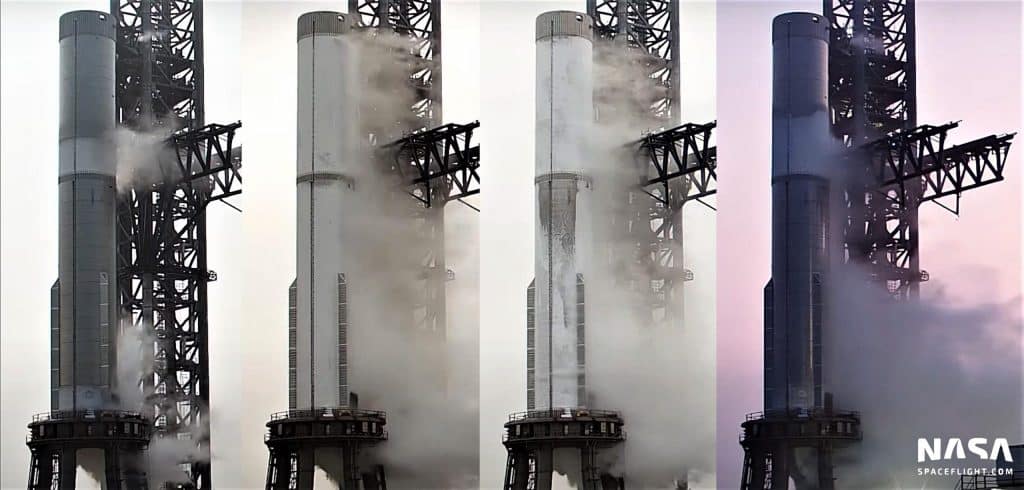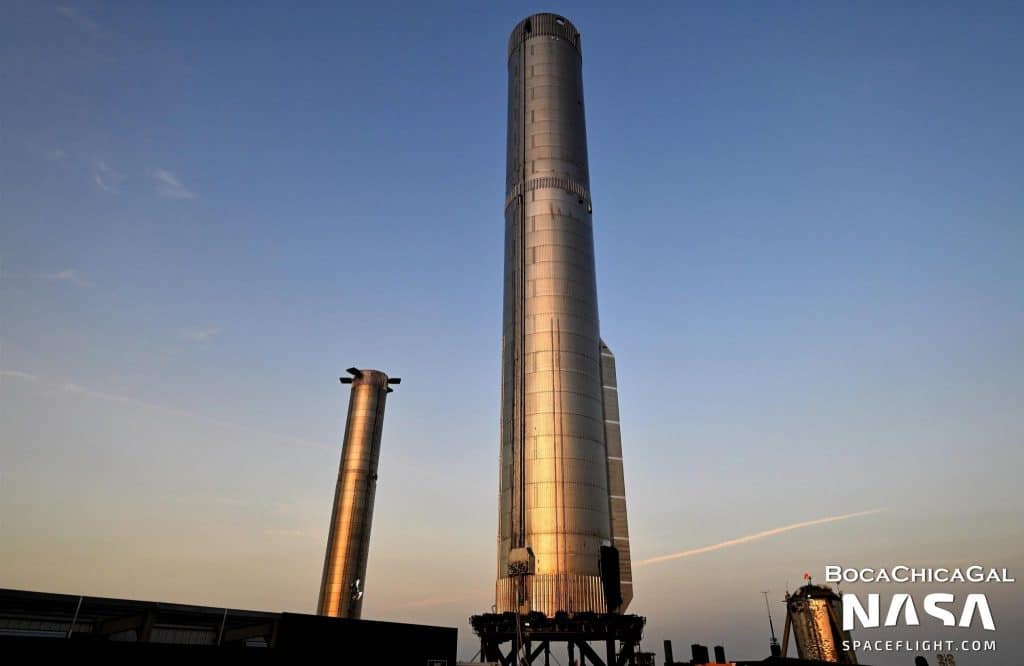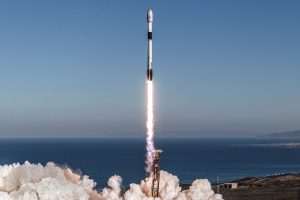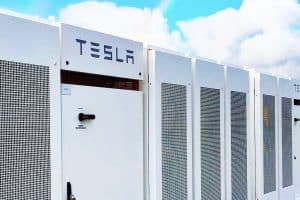SpaceX’s first upgraded 33-engine Super Heavy booster appears to have passed a crucial test with surprising ease, boding well for a smooth qualification process.
Attempting that test so early on did not appear to be SpaceX’s initial plan. Instead, shortly before Super Heavy Booster 4’s third and likely final removal from Starbase’s ‘orbital launch mount’ (OLM) on March 24th, SpaceX transported a massive structural test stand from a Starbase storage yard to the orbital launch site (OLS), where technicians have focused on modifying nearby ground systems to support apparent structural testing of Super Heavy Booster 7. As of March 31st, all available evidence suggested that SpaceX was preparing that stand to verify Booster 7’s mechanical strength and simulate the major stresses it might experience before investing a significant amount of time and resources in qualification testing.
However, SpaceX appeared to change its plans at the last minute.
Instead of starting with structural testing, after a brief two-day pause, SpaceX rolled Super Heavy B7 into place and craned the giant booster onto the orbital launch mount on April 2nd. On April 3rd, the launch mount’s “quick disconnect” device connected Super Heavy to the pad’s ground systems. On April 4th, just two days after its installation on the OLM, Super Heavy B7 kicked off the first in a series of qualification tests that will determine when or if the booster ultimately supports Starship’s first orbital launch attempt.
If testing goes perfectly, SpaceX CEO Elon Musk recently stated that Starship and Super Heavy – likely Ship 24 and Booster 7 – could be ready for an inaugural orbital launch attempt as early as May 2022. SpaceX appears to have leaped headfirst into Super Heavy Booster 7 qualification testing in a move that significantly increases the likelihood of meeting that extremely ambitious schedule. Normally, with a first-of-its-kind prototype debuting multiple significant design changes, SpaceX would start slow, possibly beginning with a basic pneumatic proof test to verify structural integrity at flight pressures – about 6.5-8.5 bar (95-125 psi) – with benign nitrogen gas before calling it a day.
With Booster 7, SpaceX likely still performed a quick pneumatic proof but then immediately proceeded into a full-scale cryogenic proof test. With Super Heavy B4, for example, SpaceX performed several increasingly ambitious cryogenic proof tests, filling the booster more and more each attempt but never actually topping it off. On Booster 7’s very first day of testing and first cryogenic proof attempt, SpaceX fully loaded the upgraded Super Heavy with a cryogenic fluid (likely liquid nitrogen) in just two hours – all with no significant unplanned holds (pauses).
In those two hours, SpaceX likely loaded Super Heavy B7’s liquid methane (LCH4) and oxygen (LOx) tanks with roughly 3400 metric tons (~7.5M lb) of liquid nitrogen (LN2) – not far off what Super Heavy would actually weigh at liftoff. At the peak of the test, Booster 7 was almost entirely covered in a thin layer of ice produced as the cryogenic liquid inside its tanks froze water vapor in the humid South Texas air onto its skin – an effect that effectively turns uninsulated cryogenic rockets into giant fill gauges. On top of running into no apparent issues, Super Heavy B7’s first cryogenic proof is also the first time any Super Heavy prototype has been fully filled during testing – an important milestone for any rocket prototype, let alone the largest rocket booster ever built.

Completing a full cryogenic proof test on its first try makes Booster 7 fairly unique among all Starship prototypes – not just Super Heavies. The contrast with Booster 4, which barely completed a handful of partial cryogenic proof tests in more than half a year spent at Starbase’s orbital launch site, is also extremely encouraging, suggesting that Booster 7 won’t be sitting inactive for months at a time.
Still, cryogenic proofing is just one of several important tests Booster 7 needs to complete. Even if the first test was nearly perfect and SpaceX doesn’t attempt one or several more cryoproofs with higher tank pressures or other tweaked variables, Super Heavy B7 needs to complete wet dress rehearsal testing (WDR) with flammable LCH4/LOx propellant and demonstrate autogenous pressurization (using heated propellant gas to pressure its tanks). At some point, SpaceX will also need to install a full 33 Raptor V2 engines on the booster and seal off the whole engine section and each Raptor with a heat shield.



Depending on how many Raptor V2 engines are available, SpaceX could begin static fire testing with just a few engines installed and shielded and then install the rest of the engines and heat shield later on. On the other hand, performing static fires without a full heat shield could risk damaging unprotected cabling or other subsystems, in which case wet dress rehearsal testing would likely follow immediately after cryoproofing and before engine or shield installation. After being skipped over, the structural test stand may also factor into Booster 7 qualification sometime before engine installation.
All told, plenty of uncertainty remains, but Super Heavy B7’s auspicious start suggests that the Booster 4 experience is far from a template and that SpaceX is much less interested in wasting time this time around.





